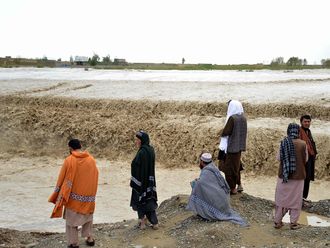Kuala Lumpur: A fifth of the world’s major cities will face “unknown” climate conditions by 2050, researchers warned, as rising temperatures heighten the risks of drought and flooding.
Climate scientists at the Crowther Lab, a research group based at ETH Zurich, a science and technology university, analysed 520 cities across the world, including all capitals and most urban centres with a population of more than 1 million.
Looking at current climate conditions in these cities — including precipitation and seasonal data — scientists projected what would happen as temperatures rise another half degree, to near the lower 1.5 degree Celsius target set in the 2015 Paris Agreement on climate change.
It showed that 22 per cent of the cities, globally, will experience unprecedented climate conditions by 2050, such as more intense dry and monsoon seasons, said Jean Francis-Bastin, the lead author of the report.
“It is a change in climate conditions that is likely to increase the risk of flooding and extreme drought,” he told the Thomson Reuters Foundation. “It is unknown conditions.” Almost 70 per cent of the world’s population is expected to be living in urban areas by 2050, according to the United Nations.
But many cities, especially in poorer nations, face significant challenges, including large and growing slum populations that lack basic services and are increasingly at risk from climate disasters.
Under the Paris Climate Agreement, which has been ratified by 185 countries, governments have pledged to keep global warming “well below” 2 degrees Celsius above pre-industrial times and strive for a lower limit of 1.5 degrees Celsius.
Limiting global temperature rise to 1.5 degrees Celsius would avoid economic losses of $12 trillion by 2050, according to the United Nations.
Crowther Lab scientists said their study, published in the journal PLOS ONE, was the first global analysis of the likely shifts in climate conditions in major cities as a result of global warming.
It showed that 77 per cent of the cities it looked at will experience a striking change in climate conditions by 2050.
Across the northern hemisphere, many cities in 30 years time could resemble places that are over 1,000km further south towards the equator, said the study, which projected conditions if current plans to cut climate-changing emissions go ahead.
In Europe, cities will warm by an average of about 2.5 degrees Celsius across the year, but summers and winters could be 3.5 degrees Celsius and 4.7 degrees warmer, respectively, Francis-Bastin said. Globally, temperatures are likely to be 2.4 degrees Celsius warmer on an average — enough to kill nearly every coral reef and soar past targets set out in the Paris Agreement.
Under the study scenario, London’s climate in 2050 could be similar to Barcelona’s current climate, with Madrid feeling more like Marrakesh, Seattle more like San Francisco, and Tokyo more like Changsha in central China, it said.
Cities in tropical regions, which are likely to see the strongest impacts from climate change, will experience smaller changes in average temperature, the study said.
But they will see shifts in rainfall patterns, leading to more severe flooding and droughts, researchers said.
Of the 22 per cent of cities that will see ‘unprecedented’ climate shifts, 64 per cent are located in the tropics and include Kuala Lumpur, Jakarta, Rangoon and Singapore, researchers said.
The study may help cities modify their planning to combat specific climate risks, Francis-Bastin said. He said he also hoped it would help persuade people to change their lifestyles to cut planet-warming emissions and cut the risks.
“We definitely and very quickly need to change the way we are living on the planet. Otherwise we are just going to have more and more droughts, flooding and extreme events,” he added.












